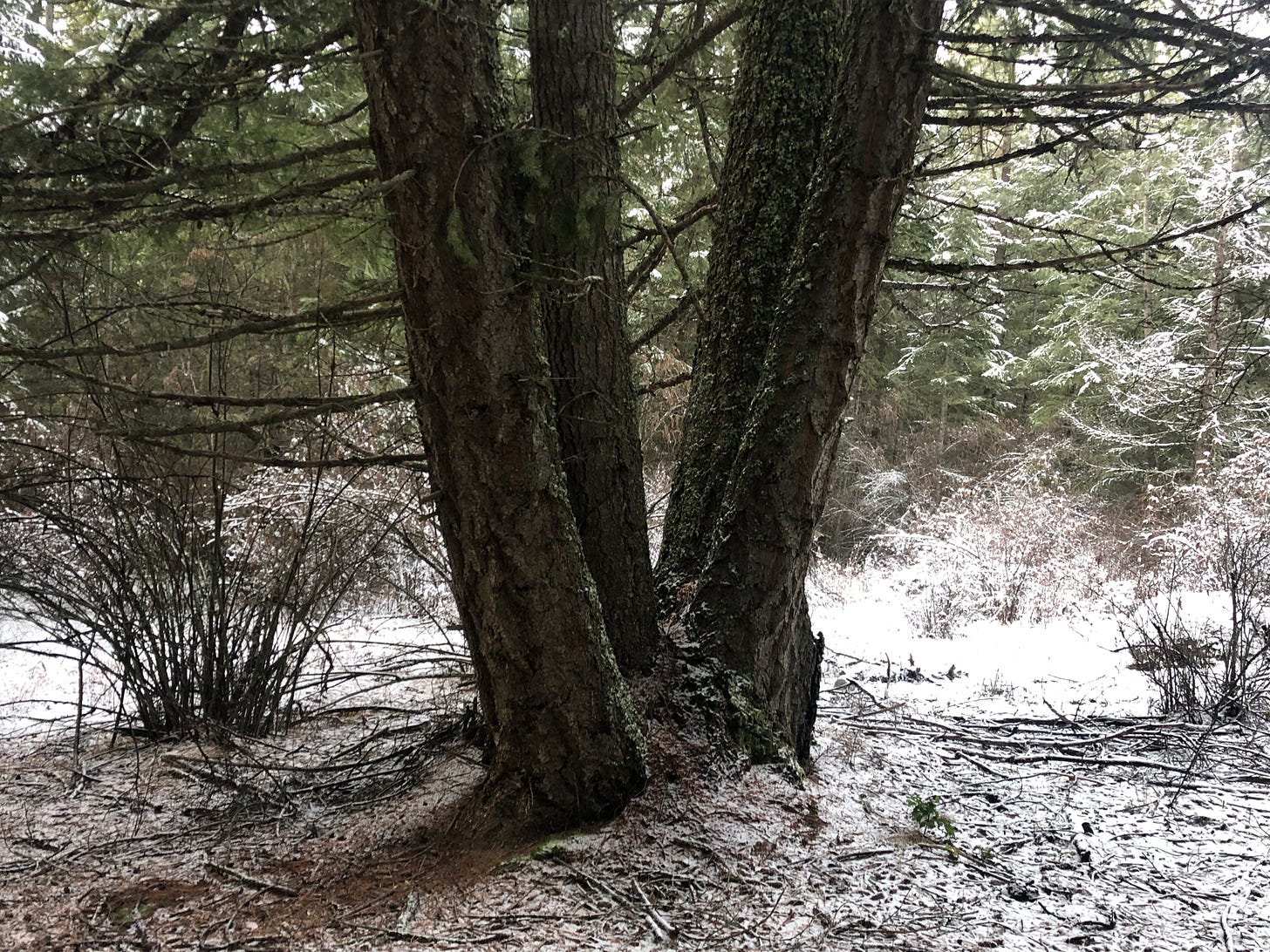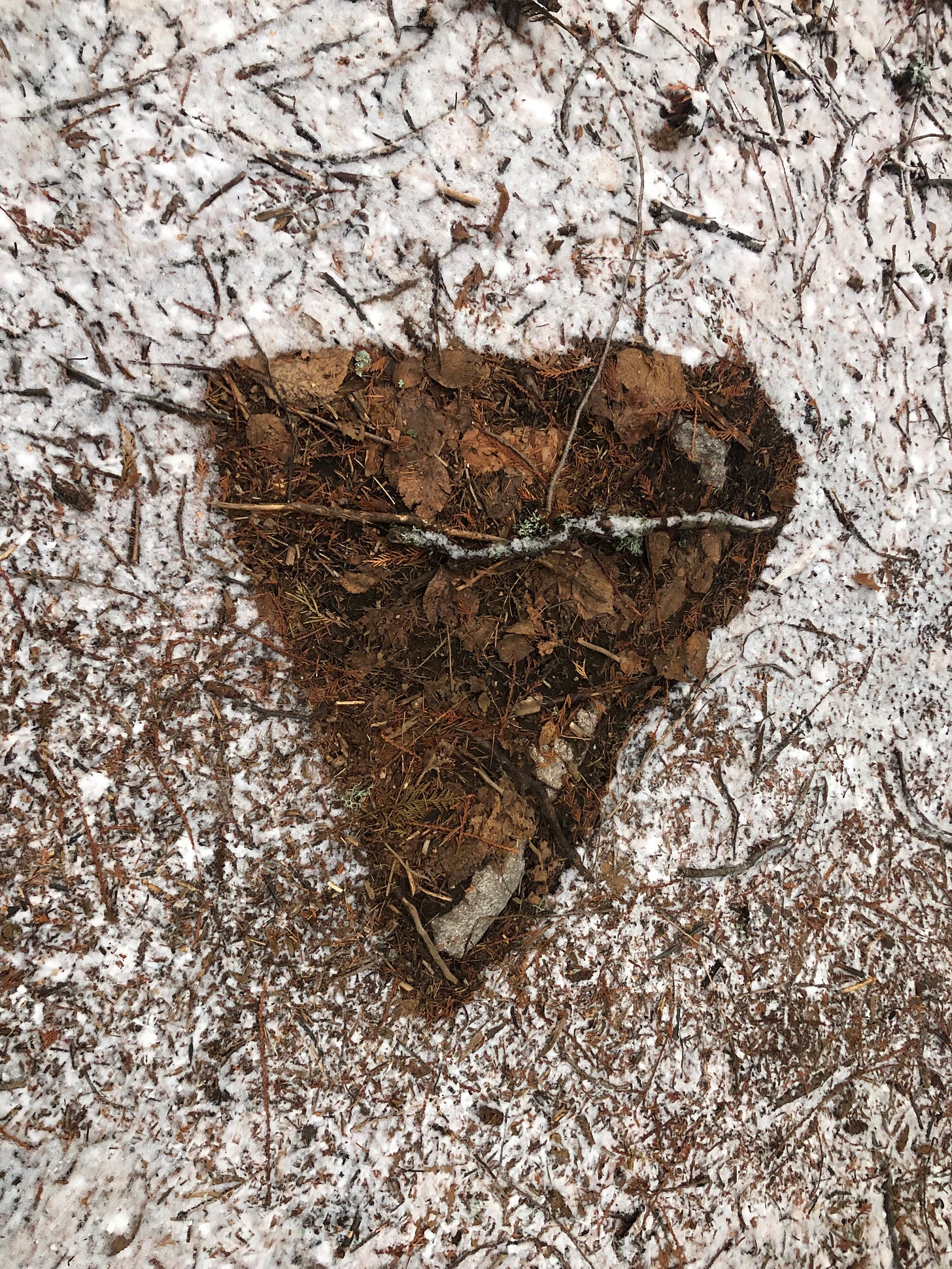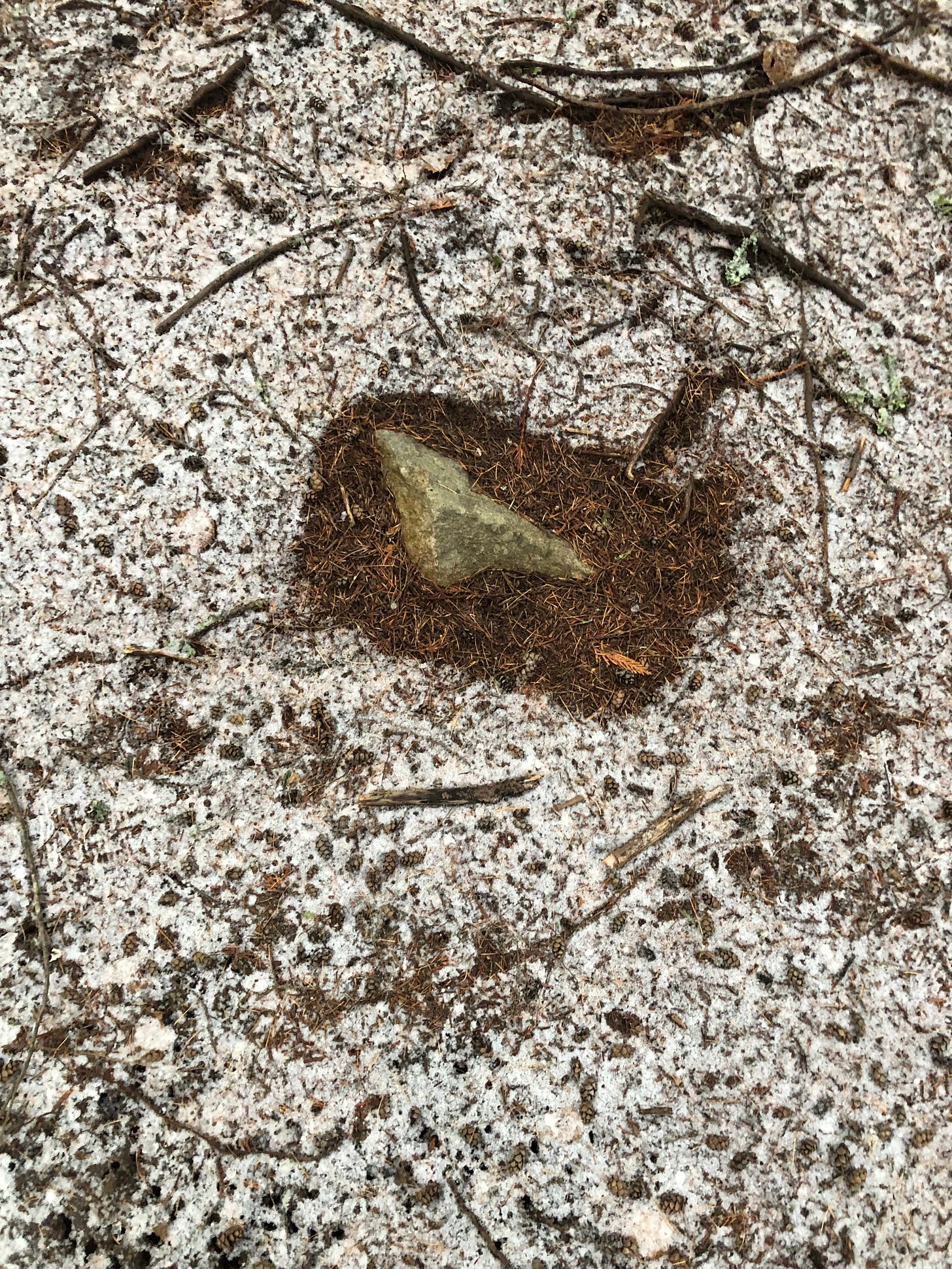I have a habit when walking in the woods of observation. Why? Mostly I am curious about the world. I cannot imagine being incurious.
I identify the trees I am walking past. Take note of fallen trees from my last visit. Why does lichen not cover glacial gravel like granite? (Because the gravels were dug up when the trail was made so haven’t had time. Not because they are too smooth.) The croak of the raven, the staccato 5 notes of the pileated wood pecker or the same call higher pitched of the red shafter flicker.
The change of weather and seasons, the impact of man, the tracks of animals. Observation makes a walk in the woods deeper. It is also part of developing my photographic eye. I tend towards intimate landscapes and the most important skill is attention.
Lately I have been contemplating what I call twin trees and what I have come to call stone shadows. Twin trees are two trees (douglas fir in this instance) that jut up from the same place or split their trunk. I started noticing these particularly in one area of Pine Street Woods. They exist elsewhere in the woods but one hill seems to be home to most instances. There is one that is actually four trunks joined together.
For cedar trees this is fairly common but it seems quite rare for the douglas fir. (All these photos are documentary and taken with my phone.)
I wonder how these all formed and why so prolific in one small area. I have some theories.
One cause might be planting. This forest has been cut in the not too distant past and I assume replanted by somebody. It could be they would plant two seedlings in one hole. They may have worked on a piece-work basis so two trees in one hole was more efficient. This assumes this person did not plant in other areas of the woods.
Another is that there was one mother tree that was twinned and dropped seeds over this area and some of the progeny carried on the same traits. This would assume natural reseeding.
There is another explanation that combines the two. Perhaps the seedling farm had a set of mutant seedlings from parent stock and these were planted.
It seems more likely that this is a genetic attribute as some of the twins deviate well above ground level thus suggesting one tree that splits its trunk.

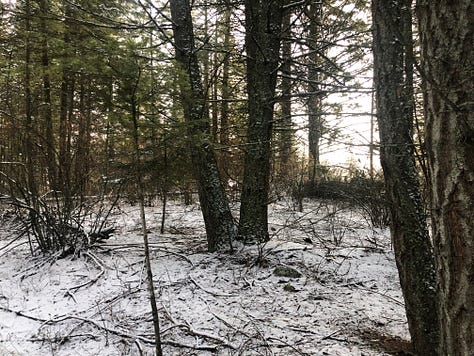
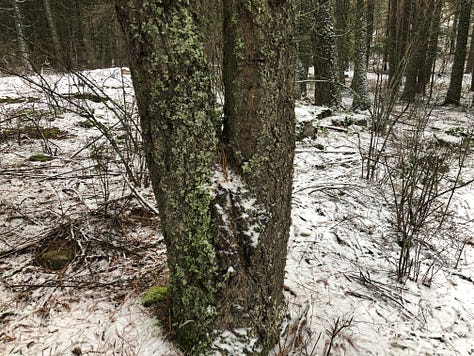

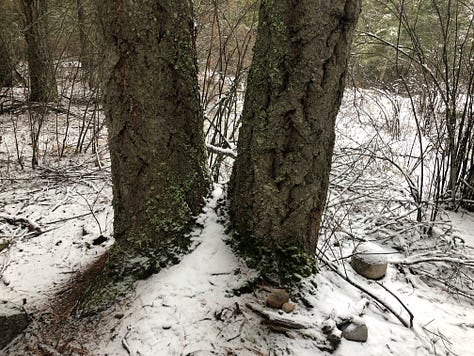
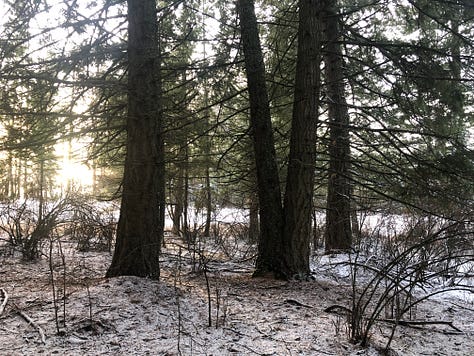



Stone shadows are what I call curious snow-free outlines in the forest. We have had cold weather for many days now and followed by a light dusting of snow. I noticed some bare patches with distinct outlines. They looked as if something had been laid down during the snow then removed later.
They mystified me for a while until I surmised there must be a rock just under the surface and that it maintains or conducts some warmth from lower down. The outline is the shape of the rock projected upward to the surface where the snow melted as it landed. The image below shows more of a stone above the surface. Some, however, have no evidence of a stone at the surface.
What do you notice when walking in the woods?





